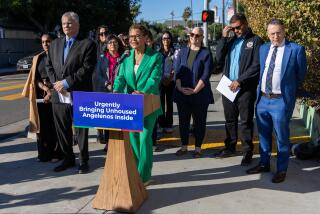Readers React: What a 1968 mouse experiment teaches us about L.A.’s growing density (hint: it isn’t good)
To the editor: John B. Calhoun, an ethologist, conducted research on the effects of population density in his 1968 experiment, the “mouse universe.” He created a habitat for mice where the only restriction was space.
He began by introducing four pairs of mice. The population reached 620 by day 315, after which the population growth dropped markedly. Between then and day 600, the mice’s social structures and behaviors broke down. Breeding never resumed and behavior patterns changed.
The conclusion? When all the space is taken and all the social roles are filled, competition and stress will be such that society will break down and the population will collapse.
The Times Editorial Board, the state and city planners keep emphasizing the housing shortage and the need to build more capacity. Unlike the “mouse universe,” this increased capacity will create additional, perhaps unattainable, demands on infrastructure, on water and food delivery, on sewage treatment and on transportation.
When will Los Angeles reach its day 600?
Buz Wolf, Studio City
..
To the editor: Los Angeles needs to provide housing to all people. The only way we can achieve this is to realize that the days of single-family housing are over.
I have seen this happening where I live. Single-family homes are an anachronism in a modern large city. They take up too much space, and there is not enough space to provide housing for everyone without increasing density.
I realize this idea might offend many people, but I am thinking of the good of everyone. No one can deny we need an enormous amount of new housing and that it needs to be as close to where people work as possible. The roads are more clogged than ever.
We have to consider serious change, or we face social disorder.
Frances Vizier, West Hollywood
Follow the Opinion section on Twitter @latimesopinion and Facebook
More to Read
A cure for the common opinion
Get thought-provoking perspectives with our weekly newsletter.
You may occasionally receive promotional content from the Los Angeles Times.






